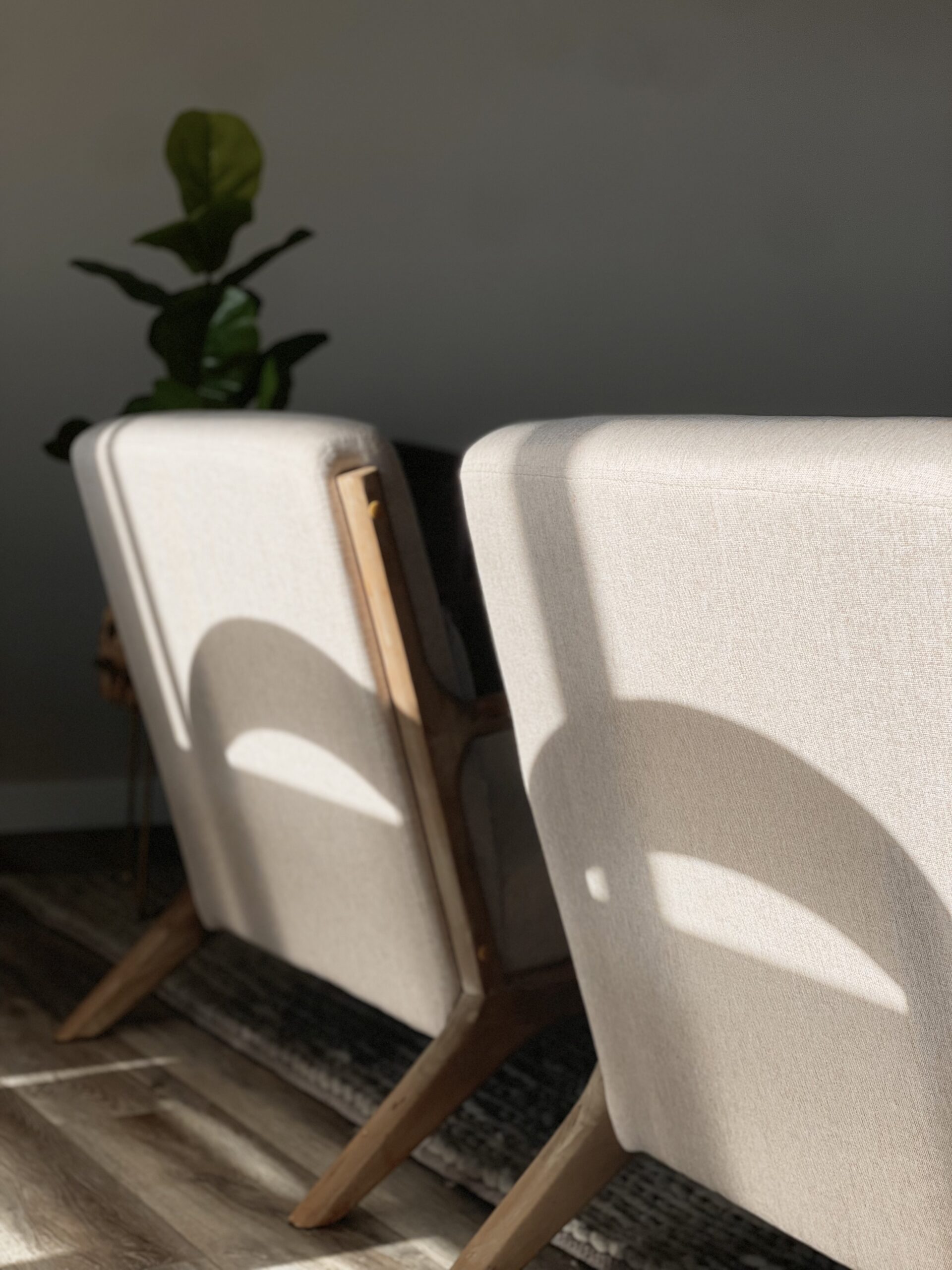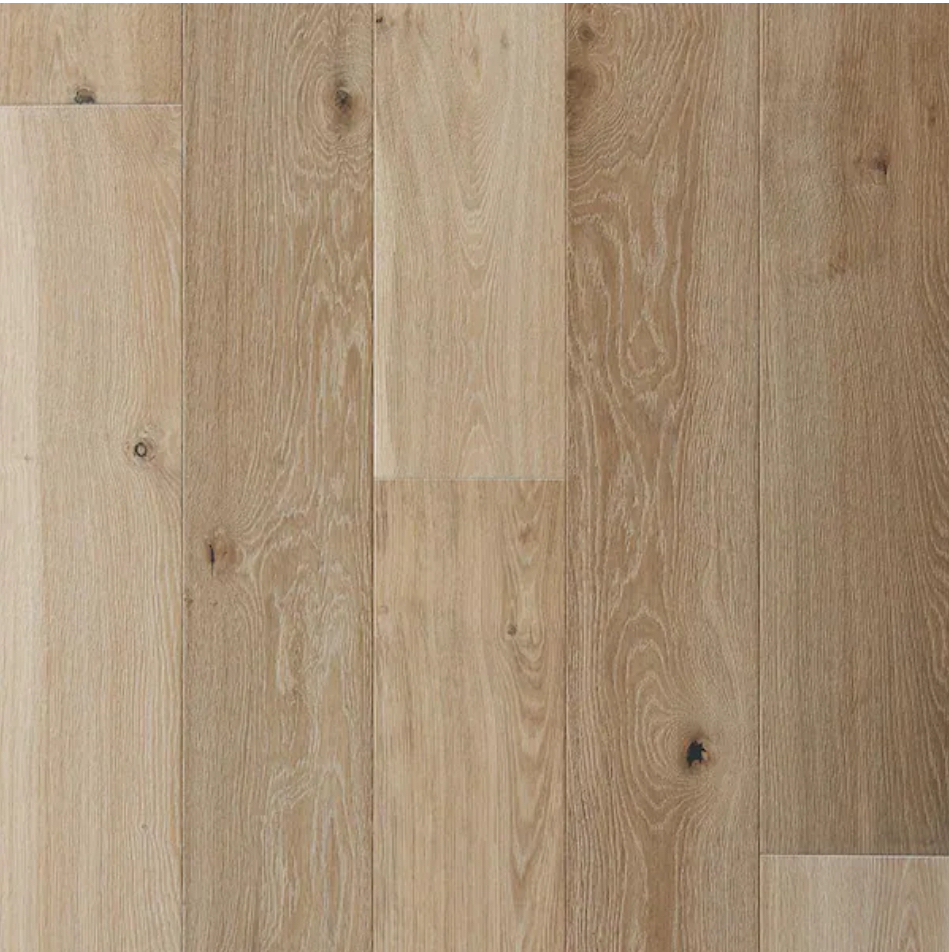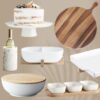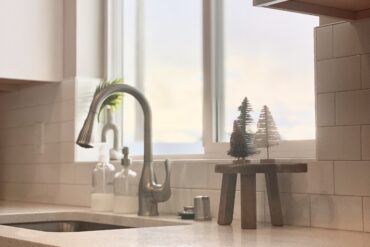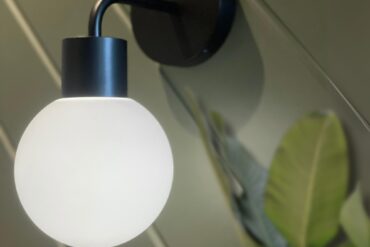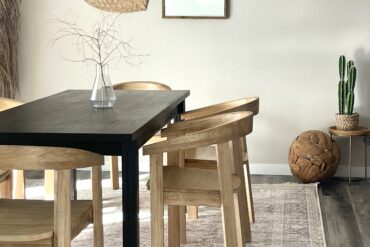Layering Wood Tones Intentionally
Mixing wood tones in your home can be a great way to add warmth and visual interest. To get started, consider how you want the wood tones to work within the space. If you want a cohesive look, stick to one type of wood (such as oak, maple or pine) and use varying shades of stain on that same wood throughout.
If you’re looking to create a bold statement, try mixing different types of wood together. Vary dark and light woods, or consider adding in different wood grains. Be mindful of the colors in the space and pick tones to complement them. You can also use accent pieces like furniture or flooring to tie the different woods together. With a little bit of creativity and careful planning, you can create a beautiful, balanced look that will make your home truly unique. Check out this stunning look below by Audrey Crisp Interiors to get excited about learning to implement mixing wood tones in your space.
Identify Dominant Wood Tone
First, discover the rooms dominant wood tone (which is usually the flooring if the flooring is wood). With a room where the flooring is tile, lean on cabinetry to dictate your dominant wood tone. For a visual example, check out the bathroom below posted by Layered In Design. This bathroom is comprised of rich wood tones that are neutral leaning warm. In this particular example, the ceiling or floor could be considered the dominant tone in the space. The flooring and ceiling are a similar color, so the addition of darker woods in the same tone family look very cohesive.
Determine Dominant Tone’s Place on Cool to Warm Scale
Next, figure out whether the dominant tone is cool, neutral or warm. Check out the diagram we’ve created below to visualize the differences between cool, neutral and warm toned words. It’s best to visualize the tones as a sliding scale. Some wood grains with heavy contrast can even have multiple tones within them.
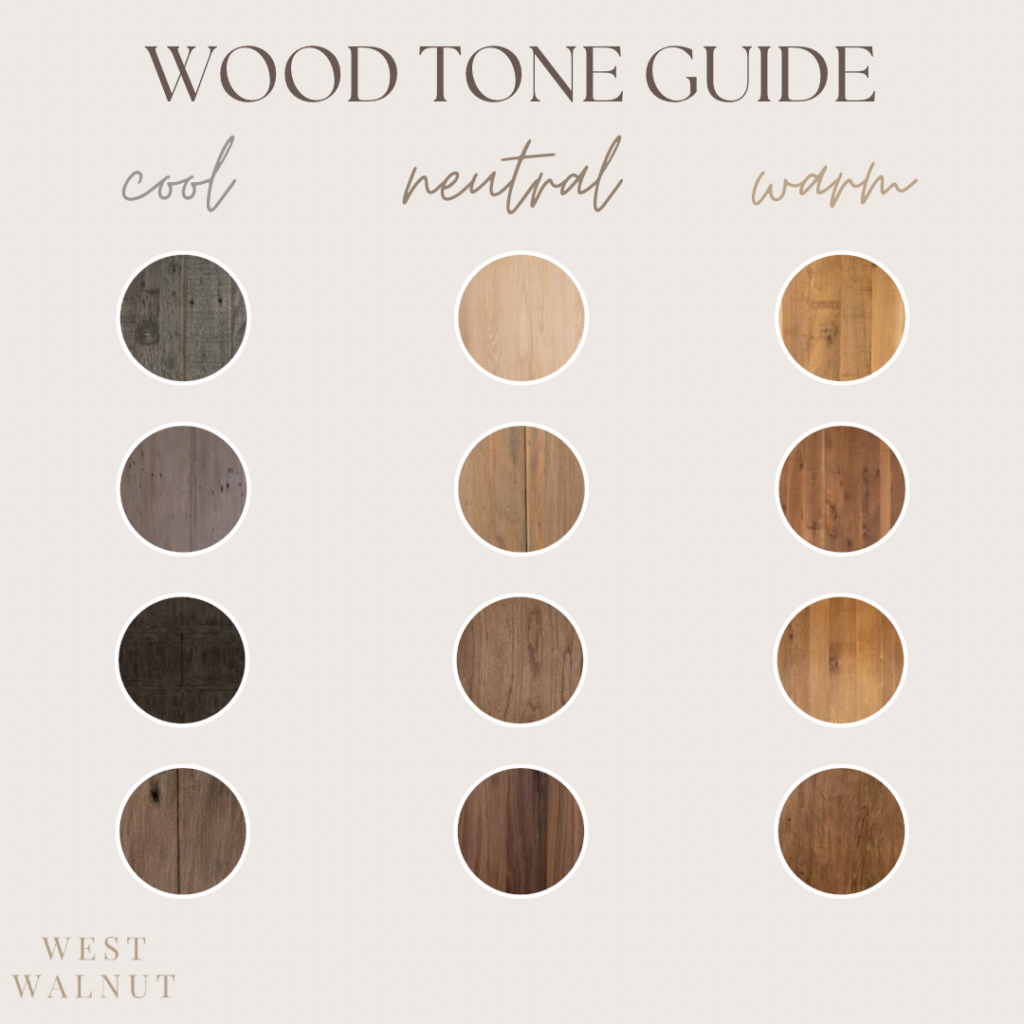
Incorporate Furniture & Decor
now it’s time to add and decor. Select furniture and decor with words in the same tone family. Keep in mind, neutral can pair with warm or cool toned wood or can even simply be combined with other neutral tones for a more monochromatic, modern look. In certain scenarios, cool and warm can even be strategically combined with the right decor choices. However, it’s important to anchor the wood tones by using each one at least twice within the space. This will add harmony and flow to the room. Check out the bold contrast in this neutral leaning warm and cool toned kitchen below by McCabe House. As you can see in this example, it’s important to anchor the tones by using each one at least twice in the space.
Which Wood Tones Pair Best Together
When pairing different wood tones, the most important thing to consider is the overall look you are trying to create. If you want a more subtle, understated look, you can pair light woods, such as maple and oak, to create a natural, traditional atmosphere. If you are looking for something more bold, you can pair darker woods, such as walnut and mahogany, to create a richer, more modern look. Additionally, it’s always a good idea to mix woods with different grain patterns, such as pairing a straight-grained wood with a more intricately grained one. Ultimately, the best way to decide which woods pair best together is to experiment and find a combination that you enjoy seeing together. Below are some beautifully curated designs by Studio McGee that execute the perfect combinations of wood tones.
Most Versatile Wood
Oak is our top favorite for pairing with other woods. Oak is a gorgeous, classic wood, it looks great with a variety of other woods. Some great options to pair with oak are walnut, cherry, mahogany, and maple. Each of these woods has their own unique qualities that enhance the beauty and timelessness of oak. To modernize oak, you can even mix it with deep espresso stained wood in addition to a textured mid-toned wood like the beams in the photo below by Ashley Montgomery Design.
Overall, the neutral undertones of oak make it the easiest and most versatile for pairing. But don’t worry, you don’t have to break the bank to achieve this look. Below we’ve linked our favorite budget friendly engineered oak option. As an added bonus, this flooring is designed with a click lock technology for easy installation.
Final Tips for Pairing Wood with Confidence
Pick your dominant tone, usually the floor determines this if it’s wood flooring. Figure out whether the dominant tone is warm cool or neutral. Select woods within the same tone family. Pairing warm and cool tones can feel too drastic, but neutral can pair with either a warm or cool toned wood family. Don’t be a afraid to get creative.

